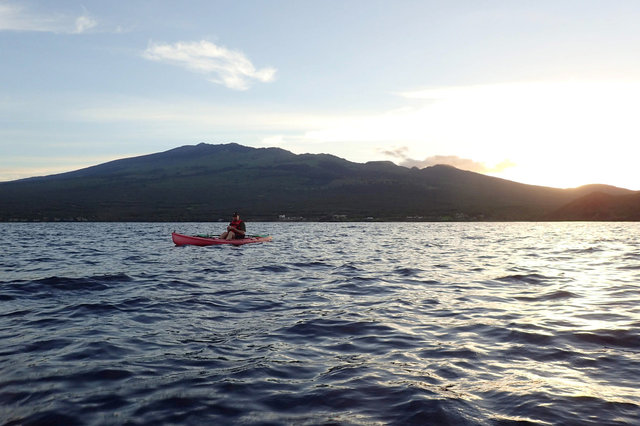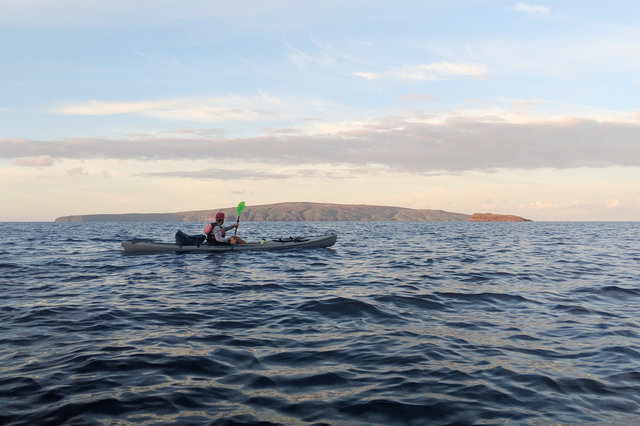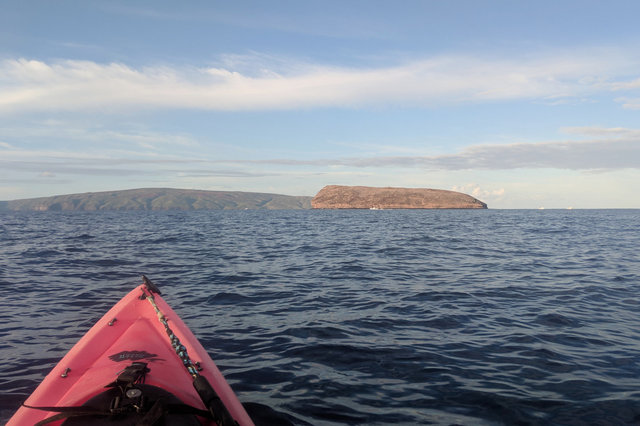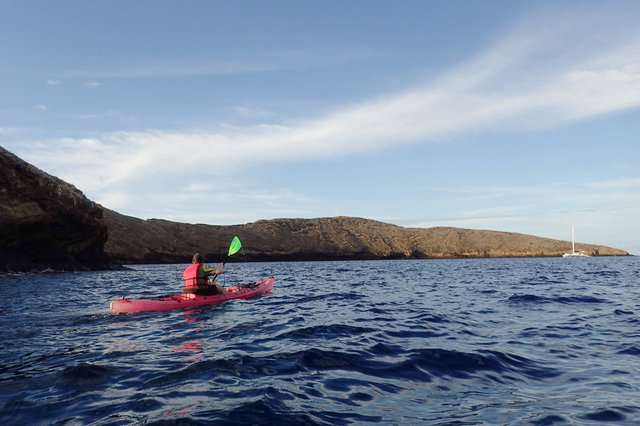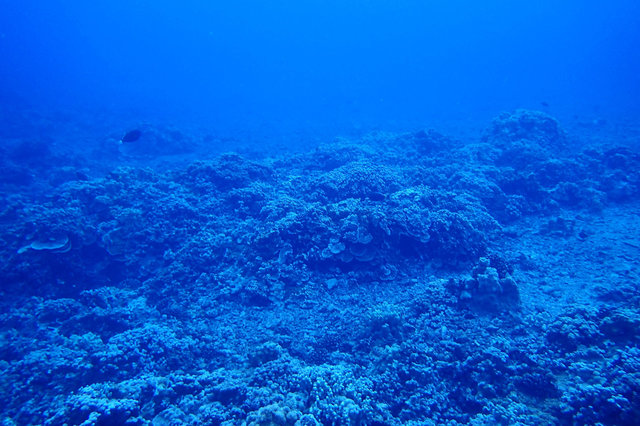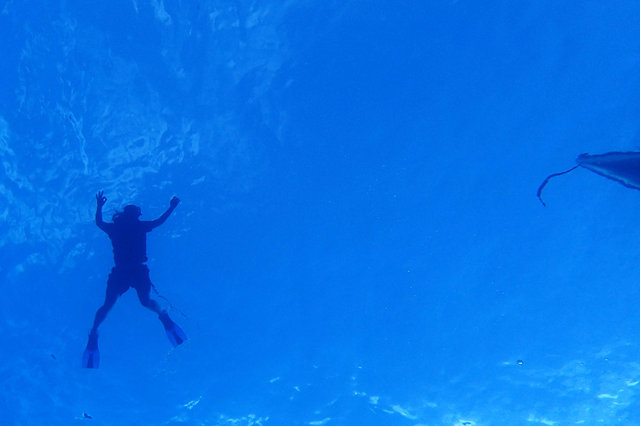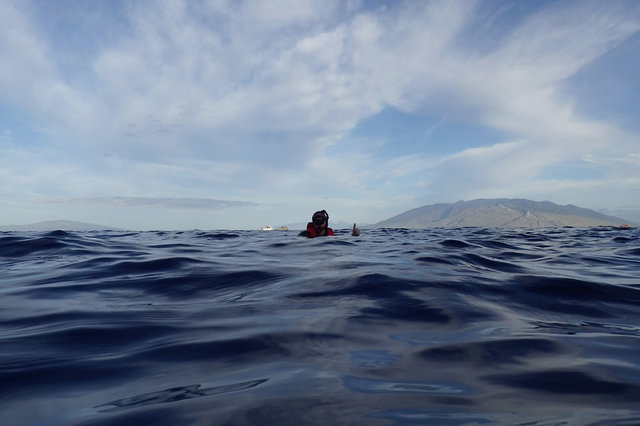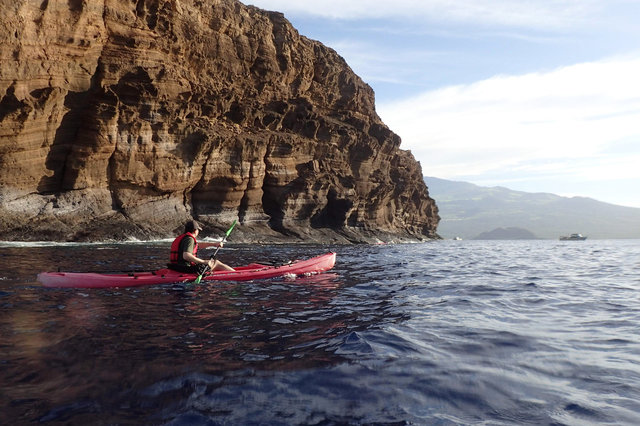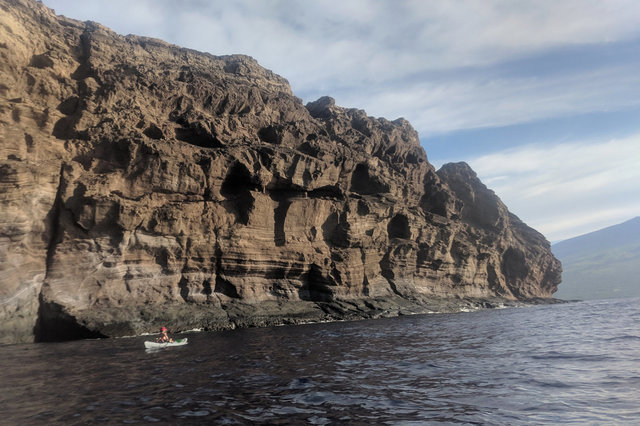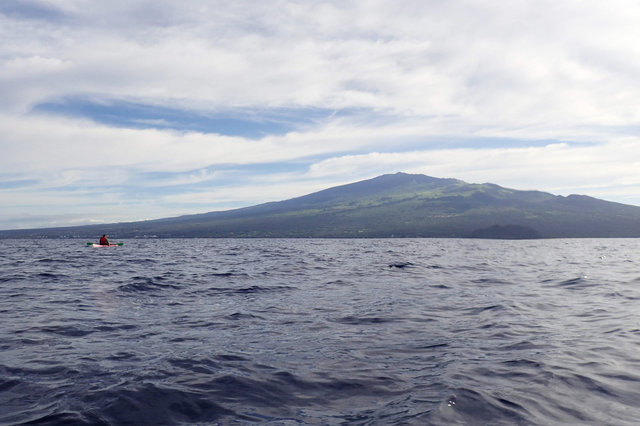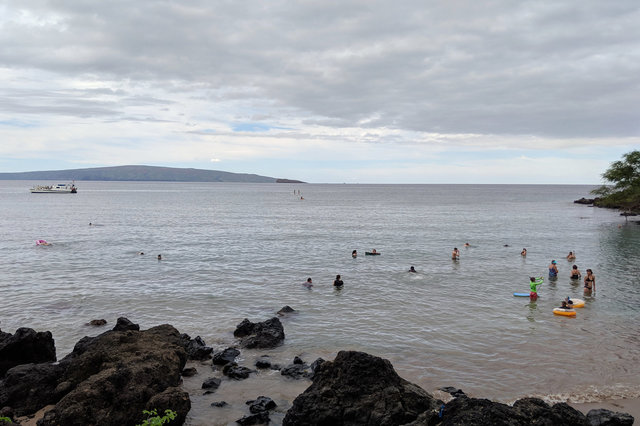Molokini Crater
Started: 2018-11-24 10:28:53
Submitted: 2018-11-24 13:55:51
Visibility: World-readable
14 November 2018: In which the intrepid narrator paddles eight miles across the ocean to a half-submerged volcanic crater
When I was invited to an employer-funded launch party in Maui, I considered what else I might do to amuse myself in addition to the scheduled events, since I'm not the kind of person to spend all of my time lounging around on the beach, regardless of how tropical it is. I've been getting into kayaking this year, and Maui is surrounded by warm tropical water, so it seemed as if I might be able to find somewhere interesting to kayak.
Looking on a map of Maui, I spotted Molokini Crater, the remains of a volcanic crater forming a tiny islet sticking 161 feet above the water off the coast of Maui popular with snorkeling and scuba diving. It seemed too ambitious to try to kayak there on my own, but further searching revealed that outfitter Hawaiian Paddle Sports offered a guided tour to Molokini that seemed like just the thing. I filled out their contact form, and their office called me on Monday afternoon (the day before I left for Maui) to confirm that I really was up to an early-morning 8-mile kayak trip, and to make my reservation for 06:00 on Wednesday, 14 November.
(The furthest I've kayaked previously was eight miles around Lake Union into Lake Washington (albeit in protected inland freshwater, not the open ocean); but I forgot to double-check that distance in advance of talking to the kayak outfitter. My other, mostly-guided trips have been on the order of four to six miles.)
I woke up early in the morning of Wednesday, 14 November, and tried to convince myself that I hadn't really adjusted to Hawaiian Standard Time yet, so it was really 07:00 Pacific time, not 05:00 Hawaiian time. I tried to unlock my rental car and found, to my dismay, that the key-fob wouldn't unlock the door -- and without my rental car, there was no way I was going to make it to my kayak rendezvous, an hour away in South Maui, in time. (The prospect of trying to call the kayak outfitter to cancel was more daunting than missing my rendezvous.) I fumbled around with the fob and found the catch that released the mechanical key hidden in the body of the fob. I unlocked the door with the mechanical key, then found that if I put the fob in the cup holders in the center console the car would start.
I drove out of the resort where I was staying, past the picket line (still staffed by a handful of picketers at 05:00), past the golf course, and onto the main road running along the coast in West Maui. There was some other traffic on the road at 05:00, and most of them wanted to drive much faster than the posted speed limit. I drove to Makena Landing Park, and found my guide Curtis waiting by the side of the road with a pickup pulling a trailer full of kayaks in the pre-dawn dark, with the sky just starting to change.
We launched from the beach in open-top kayaks and headed across the water towards the crater. The water was calm, protected from the ocean by Maui's twin volcanos to the east and north, and the neighboring island of Kaho‘olawe to the south-west. It was just before dawn, and the sky had turned a pale blue, with pink clouds lit by the sun still lurking below the local horizon.
We stopped to watch the sun rise over Maui, then continued paddling westward to the crater. To the south-west I could see the twin thirteen-thousand-foot volcanos forming the Big Island of Hawaii, Mauna Kea and Mauna Loa, lurking in the clouds above the horizon.
I had trouble with my forward paddle stroke when we launched; my boat kept wobbling from side to side, forcing me to course-correct to end up heading in the right direction. My open-top kayak lacked a rudder or a skeg to keep me going in the right direction, so I had to pay more attention to my paddle stroke to go where I wanted to go. I eventually remembered what one of my kayak instructors said about the forward stroke and tried to keep my arms straight, as if I were holding a beach ball between me and the paddle, and rotate my shoulders for the forward power stroke rather than pull with my arms. This emphasized the paddle stroke in the forward portion of the boat, where it would pull me forward in the water rather than steering, and helped stabilize my stroke and keep my arms from wearing out. (The last time I kayaked eight miles in a single day my arms were sore for the next day.)
When we set out from Maui, Molokini Crater was about 3.5 miles offshore -- which meant that it was below the horizon from where I sat in the kayak. I could see the crater perched on the water, but I couldn't see the waves breaking on the rocks. As we paddled closer, it was hard to see that we were making progress towards our destination, but as we approached I could see the white of the waves breaking on the rocks.
After an hour of paddling across the ocean, we reached the crater, then paddled into the north-facing crescent where a coral reef had developed in the shallow water. There were a couple of snorkel and dive boats already in the crater, but we'd beaten most of the boats coming from Maui that morning.
I pulled snorkel gear from my kayak's forward cargo compartment, put on the mask and fins, divested my hat and glasses (and GPS receiver), and dropped into the water. The water was swimming-pool-warm. Under the water I could hear the crackle of fish chewing on coral, and see the reef thirty feet below me, shaded to blue by the light filtering through the water.
(The underwater pictures, and all of the pictures featuring me, are from the underwater camera my guide carried. From time to time I'd look over and see my guide sticking the camera into the water to wash it off, which struck me as a totally bizarre thing to do with a camera, except that it was in fact completely waterproof so it worked. I took a bunch of pictures on my phone, protected in a waterproof case, but I wasn't brave (or foolhardy) enough to take it into the water.)
I found the most interesting part of the reef was near the edge of the crater, where the water grew more shallow and the fish congregated around the coral (where I could see the reef better without my corrective glasses). I saw more fish than I could count, in more colors than I thought possible; it was like swimming in an aquarium but they were all right there in front of me. It was an amazing experience snorkeling in the crater, surrounded by the fish and the coral, in the brilliant blue water.
I got back into the kayak as more boats approached the crater and prepared to disgorge their eager passengers, and ended up facing the wrong way (requiring a slightly-awkward spin around the Z axis to face the right direction). We paddled out of the crater, past a large motor catamaran with staff preparing the water for the dozens of passengers standing on the top deck, past the waves breaking on the barely-submerged north-western rim of the crater, over the drop ("From Finding Nemo", my guide told me) where the ocean floor dropped away hundreds of feet. I could see where the shallow blue water turned to deep blue, nearly black, as the rock of the crater disappeared below.
We paddled around the back wall of the crater where the rocky wall climbed a hundred feet above the water and dropped away for hundreds of feet below the water. I got back into the water in my snorkel gear and looked at the vertical reef clinging to the side of the cliff. Here the only place I could see anything was next to the rock; below me, the water dropped into oblivion further than I could see, even in the spectacularly-clear tropical water. I saw a few dive boats on this side of the crater, waiting as their passengers swam along the vertical wall.
I got back in my kayak (facing the right way, this time) and we headed back east across the channel towards Maui. A light wind had picked up, no more than a couple of knots, coming from the north-east, making us work harder for our return trip. The water remained fairly calm; the waves were only a couple of inches. My boat wanted to turn into the wind; I had to work on my paddle stroke to keep pointing east-north-east, back to the beach we launched from.
As we paddled, Maui refused to appear any closer ahead of us, though I could see Molokini retreating in the distance. After an interminable paddle across the water, I could see the beach where we were supposed to land; and eventually we passed other kayakers and paddleboarders who had launched from the beach. At length we pulled into Makena Bay and landed at the tiny beach where we launched from. It was about 10:00; we'd been on the water for almost four hours, and I still had the rest of the day ahead of me -- but I'd already completed the Molokini Challenge, the high-point of my trip.
From the beach I looked out, past the people swimming (and kayaking, and paddleboarding) in the water, to Molokini Crater; and I was thrilled to have paddled there and back under my own power.

